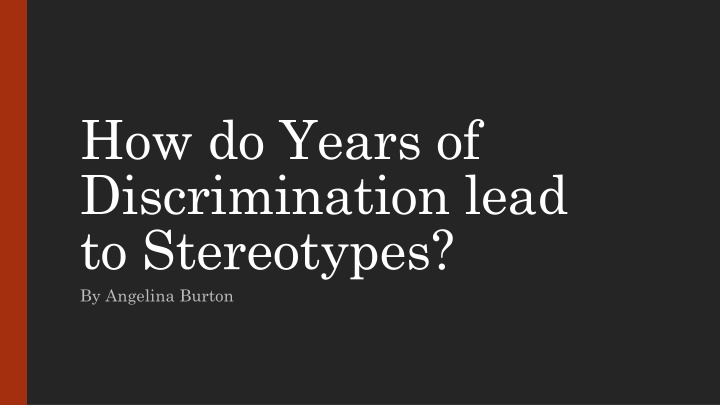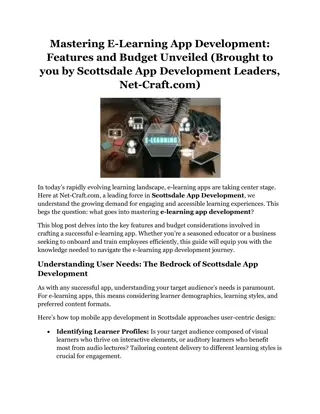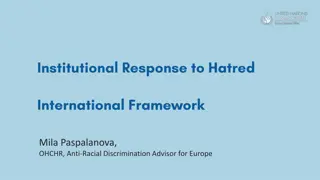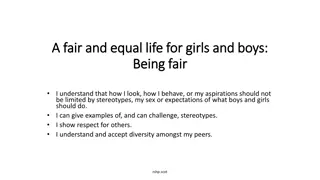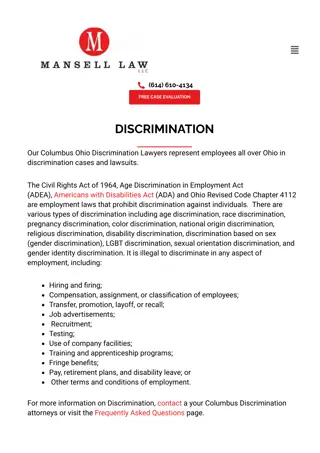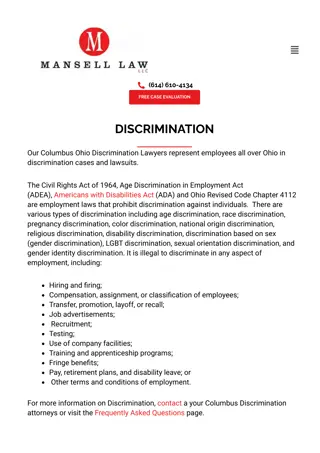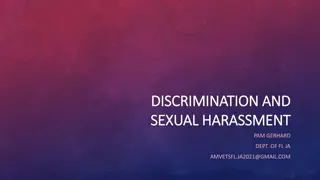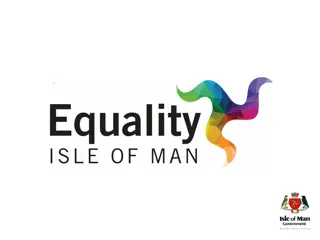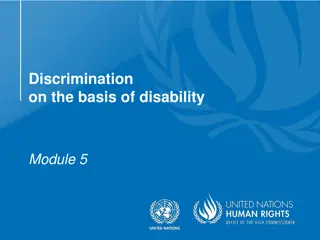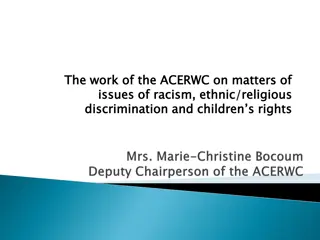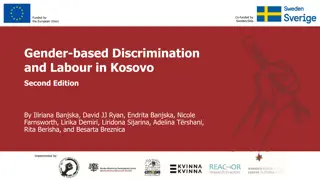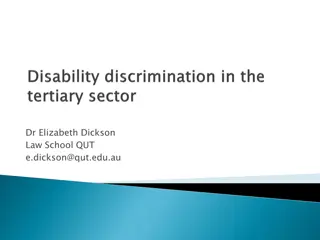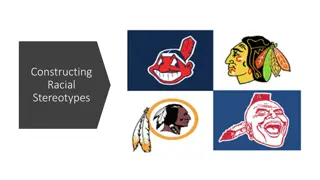Years of Discrimination and Stereotypes: The Impact Unveiled
Years of discrimination can sow the seeds of stereotypes, influencing perceptions and behaviors. Explore how attitudes may evolve and solidify over time, shaping societal beliefs and interactions. Delve into the complex dynamics at play in narratives like "To Kill a Mockingbird," where characters and settings reflect broader themes of injustice and resilience. Uncover the interplay between individual struggles and societal norms, illuminating the lasting effects of historical biases.
Download Presentation

Please find below an Image/Link to download the presentation.
The content on the website is provided AS IS for your information and personal use only. It may not be sold, licensed, or shared on other websites without obtaining consent from the author.If you encounter any issues during the download, it is possible that the publisher has removed the file from their server.
You are allowed to download the files provided on this website for personal or commercial use, subject to the condition that they are used lawfully. All files are the property of their respective owners.
The content on the website is provided AS IS for your information and personal use only. It may not be sold, licensed, or shared on other websites without obtaining consent from the author.
E N D
Presentation Transcript
How do Years of Discrimination lead to Stereotypes? By Angelina Burton
To Kill a Mockingbird Plot The first part of the book is introducing the characters, adding more characters, and building up to the second part The second part is the case Atticus gets the case and is somewhat hated by the county for defending a black man in court Scout and Jem get a bit of the backlash at school The case finally happens, Atticus puts up a fight, yet loses to an unfair jury The third part is more or less the after affects Tom getting killed Scout and Jem getting attacked Boo Radley saves them Scout and Boo become friends for a night, and she never sees him again
Setting Maycomb, Alabama Fake county 1930 s Great Depression
Characters Scout Finch Protagonist in first half coming from her point of view Everything happening comes from her opinion of the world Atticus Finch Protagonist in second half would rather ruin his reputation and do what is right than keep his honour, but ruin a guy s life (even though it was ruined anyway) Bob Ewell Antagonist goes against Atticus Is in all ways an evil man gets Tom in trouble for something his daughter did, lashes out on kids for their father ruining his reputation
POV and Symbols The whole book was in Scout s point of view (1stperson) Boo Radley Mockingbird Even though he killed Bob Ewell, he has never done anything to hurt the county Ties into what Atticus and Miss Maudie tell the kids earlier on in the book It s a sin to kill a mockingbird. Your father s right. Mockingbirds don t do one thing except make music for us to enjoy. They don t eat up people s gardens, don t nest in corn cribs, they don t do one thing but sing their hearts out for us. That s why it s a sin to kill a mockingbird.
Conflict Person vs Person Atticus vs Bob Main plot for the second half Bob vs Mayella He gets very mad at her and beats her up for doing something very wrong in that era (kissing a black man) Scout vs Jem Very small quarrels between them, not a major conflict Person vs Society Tom vs Rasicm Unfair trial, pinned for something he didn t do because he was black Scout/Jem vs the county Once word got out that Atticus was defending a black man, they got kind of bullied
How the Book relates to the Question Since this book was set during the Jim Crow laws, there is a lot of discrimination towards black people They were seen as dirty and less than Black Face was used commonly in theatre/entertainment to belittle the black community (They were thought of only as a joke/comedic relief) A white man is hated because he married a black woman Tom Robinson only lost the case because he was black Because of stereotypes made over 100 years ago, there are still people in 2017 with these notions and ways of thinking People still think that they are less than white people
Life-Long Lover of Literature This book is a classic. It has been loved by many for over 70 years. For me, it really opened my eye on situations that I knew very little about. I used to think that I wouldn t like older books, but I think this definitely changes my point of view on that.
Why I Chose this Book I had heard about it in elementary school. From what I remember, all I thought about it was that it had a weird title. When we got to choose which book we wanted for this year s novel study, all I knew was that it was old and a good read (I had no idea what the book was actually about) After doing research prior to reading the book, I was very intrigued, since it added to my knowledge from reading Les Larmes Noires last year in French class. I m very happy I chose this book, even if I was not into it during the first few chapters.
